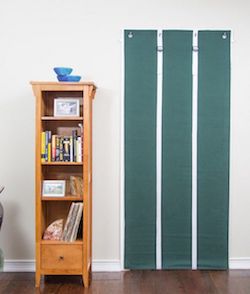No products in the cart.
Soundproofing Secrets for Your Home

28
Dec
While it’s no secret that excess noise can be a huge problem in your home, it can be hard to know where to start or what to do when it comes to soundproofing. Keep reading for our secrets to soundproofing your home, as all of these tips can be done by the everyday DIY’er with no experience necessary!
Tips for Soundproofing Your Home
Use Soundproofing Sealant Liberally
It may seem minor, but even the smallest crack or gap can allow noise to enter the home. Check carefully around your walls and floors, sealing any spots you notice with a soundproofing sealant. Filling these noise leaks is an easy, low-cost solution to outside noise problems.
As we often say with the 1% rule: a 1% opening allows 50% of the sound through. Previous construction that leaves penetrations in the drywall, or even small knots in wood base plates can allow sound to flank around the primary assembly. Use sealant in these spaces liberally.
Soundproofing Windows with Curtains
A huge amount of street noise is able to enter the home through windows. However, a soundproofing curtain, such as The AcousticCurtain™, works to deflect sound waves away from the space. It can be designed to fit over any window frame and comes in a variety of fabric color options. It solves noise problems with no construction and drastically changes the atmosphere of a room.
Soundproofing Doorways
If sound is transferring between rooms within the home, soundproofing the door is an effective way to stop that transfer. The AcoustiDoor™ is a retractable sound-blocking panel that hangs over the door and can be rolled up when not in use. It can be customized to fit over any door and traps sound before it can travel to other rooms.
Install Updated Appliances
Older appliances often put out a lot of noise due to their low-volume, steady hum or rattle. This can be very annoying and also create a lot of distracting background noise. Newer appliances are much quieter, as manufacturers have figured out how to make near silent appliances. While it’s a larger investment, they are more energy efficient and quieter, therefore saving you money and headaches in the long run.
When researching appliances or air conditioning units, look for their NC (Noise Criteria) or dBA levels. These should be at or near 40, or less. While low-volume appliances may cost more than their standard counterparts, it can remove a common noise complaint. Pay special attention to appliances that kick on or off (like ice makers), since the variable timing can cause particular annoyance.
Using Sound Absorbing Materials
If you want to reduce sound bouncing around a room, absorbing materials can do the trick. Absorbing materials are usually soft, airy, and plush. The thicker the better! Blankets, pillows, rugs, and carpet, as opposed to hard surfaces, can be an effective way to reduce echo and reverberation in your home.
Silence Pipes and Ducting
Rattling or vibrating pipes can be a nuisance, but are relatively easy to fix. Pipe Blokker combines a loaded vinyl with a reinforced aluminum foil layer to reduce the sound coming from pipes. If you have exposed pipes around your home, or are facing noise disturbances from pipes in the garage or basement, this is a great solution for you.
Now that these secrets have been revealed, soundproofing your home will be a manageable and easy to complete task! If our soundproofing secrets helped you, let us know in the comments below!
Summary

Article Name
Soundproofing Secrets for Your Home
Description
Soundproofing your home may be done in many ways - stop outside roadway traffic, improve sound blocking through doors and windows, and treat noisy pipes
Author
Fernando Eguez
Publisher Name
Residential Acoustics
Publisher Logo
